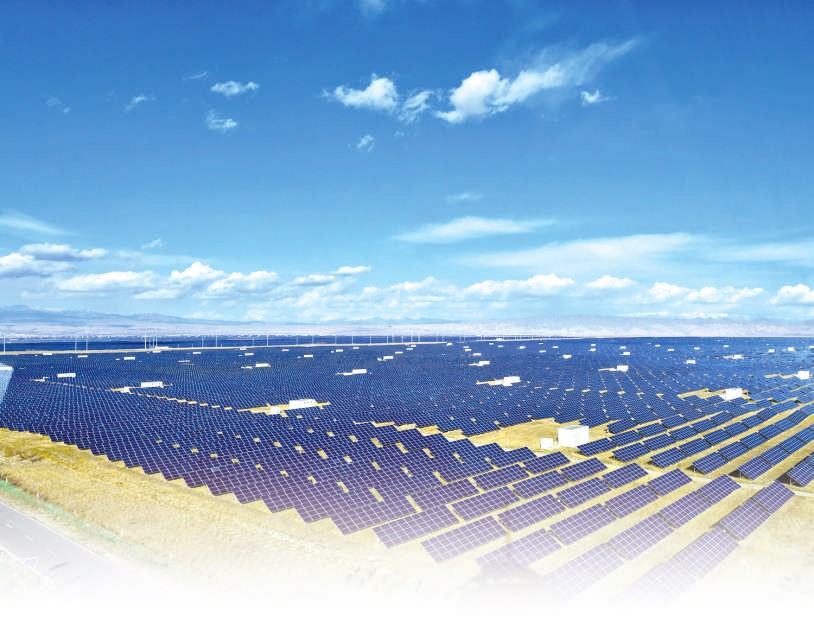NW China’s Qinghai strives to boost development of clean energy industry

Photo shows world’s largest water-light complementary power project in Gonghe county, Tibetan autonomous prefecture of Hainan, northwest China’s Qinghai province. (People's Daily/Jiang Feng)
Row upon row of wind turbines and solar photovoltaic (PV) power stations are operating round the clock on highlands in northwest China's Qinghai province, spreading over a vast area of the province from the Qaidam Basin to the Sanjiangyuan region, which is home to the headwaters of the Yangtze, Yellow, and Lancang rivers.
In February this year, Qinghai province's total power output reached about 6.55 billion kWh, among which 2.31 billion kWh, or 35.27 percent, was generated by hydropower facilities.
The amount of electricity produced using new energy resources reached nearly 2.63 billion kWh, rising 43.99 percent year on year and accounting for 40.09 percent of the province's total in February.
The monthly power production using new energy resources surpassed that from hydropower facilities for the first time in February, and new energy resources have become the biggest power source of Qinghai province, according to Fang Baomin, director of the dispatching and control center of State Grid Qinghai Electric Power Company.
Qinghai province has complex and diverse landforms, and plateaus cover more than four fifths of the areas in the province, which gives Qinghai a considerable amount of developable wind energy resources and abundant solar energy resources.
Based on these advantages and resources, Qinghai province has implemented the country's innovation-driven development strategy and is blazing a path of eco-friendly high-quality development.
Located 50 kilometers away from the Longyangxia hydropower station in Gonghe county, Tibetan autonomous prefecture of Hainan in Qinghai province, stands a PV power station with an installed capacity of 850,000 kW. Together, the two power stations form the world's largest hydro-PV hybrid power project.
With the help of advanced technologies, Qinghai province converts the unstable electricity generated by the PV power station into stable, high-quality, and safe electrical energy at the Longyangxia Hydropower Station.
At present, the annual power output of the PV power station stands at around 1.49 billion kWh, already one fourth of that of the Longyangxia Hydropower Station. In addition, the peak load and frequency regulation performance of Longyangxia Hydropower Station has improved by about 30 percent because of the PV power station.
Green electricity from low carbon power generation sources has been more and more widely used in Qinghai.
Thanks to the active efforts of State Grid Qinghai Electric Power Company to facilitate participation of new energy companies and 95 industrial and mining enterprises in 13 industries in the direct trading of electricity, a supplier of materials for new energy products based in Dongchuan Industrial Park in Xining, capital of Qinghai province, can now choose to use the more economical green electricity via electricity trading platform of the province.

The Qinghai-Henan ±800kV ultra-high voltage direct current power transmission project is officially put into operation on July 15, 2020. The project, which transmits power from northwest China’s Qinghai province to central China’s Henan province, marks the first time that large-scale transmission of electricity generated using mainly new energy sources is conducted in the world. (People's Daily Online/Liu Hui )
"Our company has considerably cut the electricity costs through multilateral trading of green electricity, and can save tens of millions of yuan a year on power consumption," said an executive of the company, which consumes as much as two billion kWh of electricity a year.
As the company has been using greener electricity, it has witnessed a significant reduction in carbon emissions during production, and enjoyed greater competitiveness in both domestic and overseas markets, the executive added.
Besides promoting the production and use of green electricity, Qinghai province has also employed advanced technologies, including big data and the Internet of Things (IoT), to promote the digital operation and maintenance of new energy power plants on its vast land.
Because of the endeavor, which can liberate labor force and cut the operating costs of power plants by over 40 percent, 40 centralized PV power stations of the province can reduce a total of about 20 million yuan in operating costs every year.
Last year, Qinghai saw its output of electricity generated using clean energy sources reach 84.7 billion kWh, up 8.7 percent year on year, with the amount of electricity produced by clean energy sources accounting for 89 percent of the province’s total electricity output.
From the perspective of environmental protection, 84.7 billion kWh of clean electricity is equivalent to 38.11 million tons of raw coal and a reduction of 62.68 million tons of carbon dioxide emissions.
Photos
Related Stories
- Spring campus job fair for graduates of 2021 held in NW China's Qinghai
- Qinghai increases investment in education
- People of Tibetan ethnic group pray at Taer Monastery in Qinghai
- Special policewomen participate in training on plateau in Qinghai
- Qinghai launches campaign to eradicate parasitic disease in pasturing areas, consolidates poverty alleviation achievements
Copyright © 2021 People's Daily Online. All Rights Reserved.










